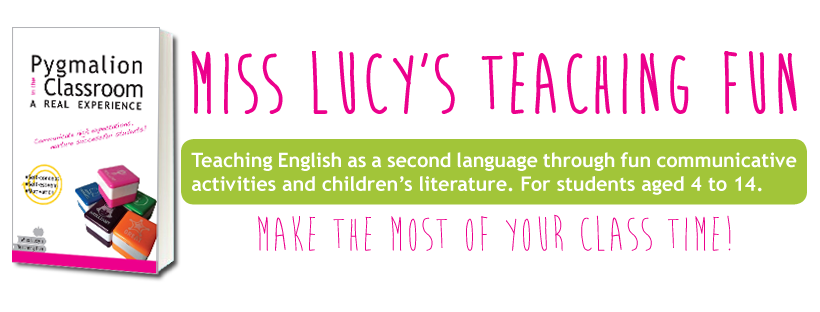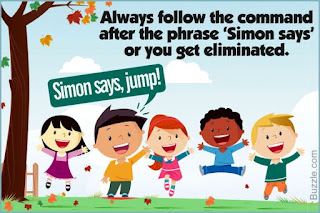'Simon says' is an action game teachers can use to review vocabulary and action verbs; it can be played anywhere and it only requires at least 3 people. The teacher is usually designated Simon, but you can always pick one of the children if you'd like to work on their speaking skill; the other children are the players.
Standing in front of the players, Simon tells them what they must do. However there's a trick: the players must follow the instructions only if they begin with the words "Simon says". For example, if "Simon says hop" then the players must jump, but if Simon simply says "hop", skipping the words"Simon says", then players must not hop. Those who do hop are out.
I've thought we can make the most of this game with young learners who are learning English using Synthetic Phonics and are already acquainted with 'blending'. Actually the adaptation is absolutely easy peasy: we only have to substitude "Simon says hop" with "Simon says h-o-p".
Some examples: Simon says... J-u-m-p
H-o-p
S-k-i-p
R-u-n
T-u-r-n around
S-t-o-p
S-i-t
S-t-a-n-d
S-t-a-m-p your f-ee-t
C-l-a-p your h-a-n-d-s
Touch your l-e-g/a-r-m/f-ee-t/...
P-l-ay the piano/the guitar/football/tennis/...
P-oi-n-t to the door/the window/...
S-i-ng a s-o-ng
P-i-ck a flower/ an apple /...
Ea-t a lolly/spaghetti/...
Drive a c-ar/ a b-u-s / a j-e-t/ a b-oa-t/...
R-oa-r like a lion
Qu-a-ck like a d-u-ck
etc.
The only advice I'd give you is to choose your words taking into account the phonemes and the vocabulary we've already worked with our students, either using flashcards or chants, and as always... have fun!
--> Quiero leer este post en español
Standing in front of the players, Simon tells them what they must do. However there's a trick: the players must follow the instructions only if they begin with the words "Simon says". For example, if "Simon says hop" then the players must jump, but if Simon simply says "hop", skipping the words"Simon says", then players must not hop. Those who do hop are out.
I've thought we can make the most of this game with young learners who are learning English using Synthetic Phonics and are already acquainted with 'blending'. Actually the adaptation is absolutely easy peasy: we only have to substitude "Simon says hop" with "Simon says h-o-p".
Some examples: Simon says... J-u-m-p
H-o-p
S-k-i-p
R-u-n
T-u-r-n around
S-t-o-p
S-i-t
S-t-a-n-d
S-t-a-m-p your f-ee-t
C-l-a-p your h-a-n-d-s
Touch your l-e-g/a-r-m/f-ee-t/...
P-l-ay the piano/the guitar/football/tennis/...
P-oi-n-t to the door/the window/...
S-i-ng a s-o-ng
P-i-ck a flower/ an apple /...
Ea-t a lolly/spaghetti/...
Drive a c-ar/ a b-u-s / a j-e-t/ a b-oa-t/...
R-oa-r like a lion
Qu-a-ck like a d-u-ck
etc.
The only advice I'd give you is to choose your words taking into account the phonemes and the vocabulary we've already worked with our students, either using flashcards or chants, and as always... have fun!
--> Quiero leer este post en español














